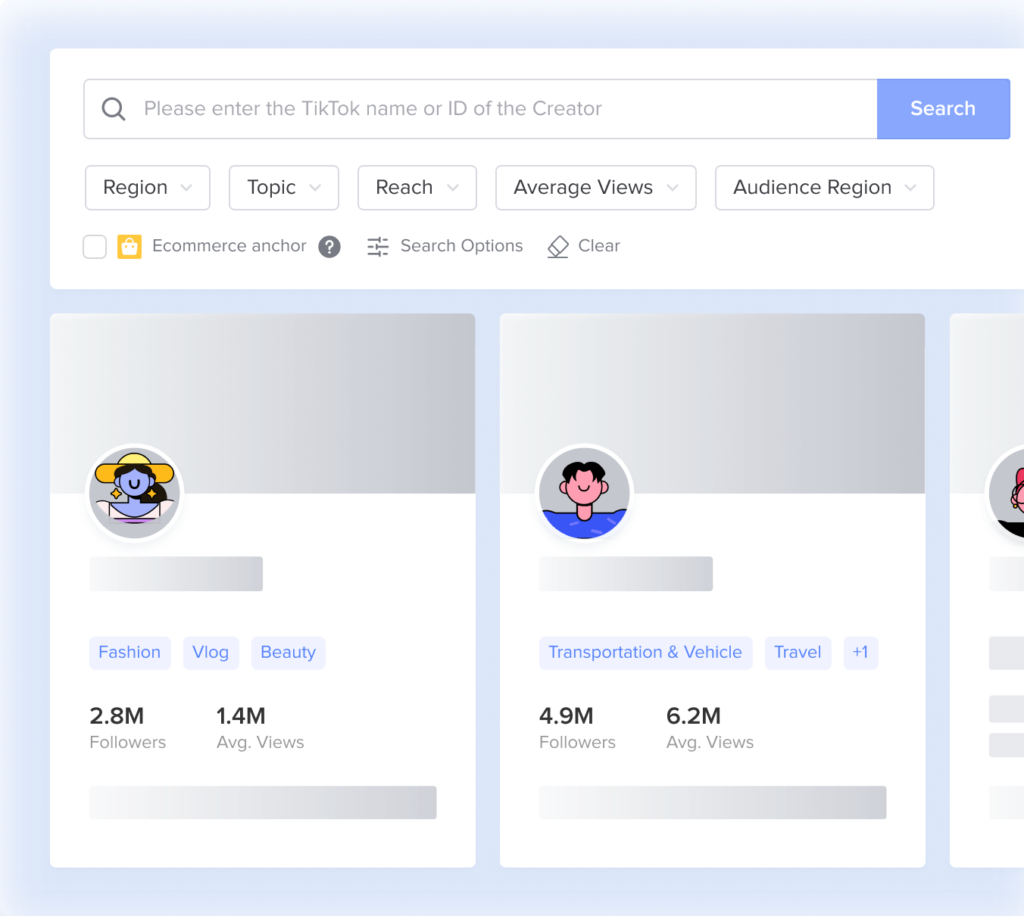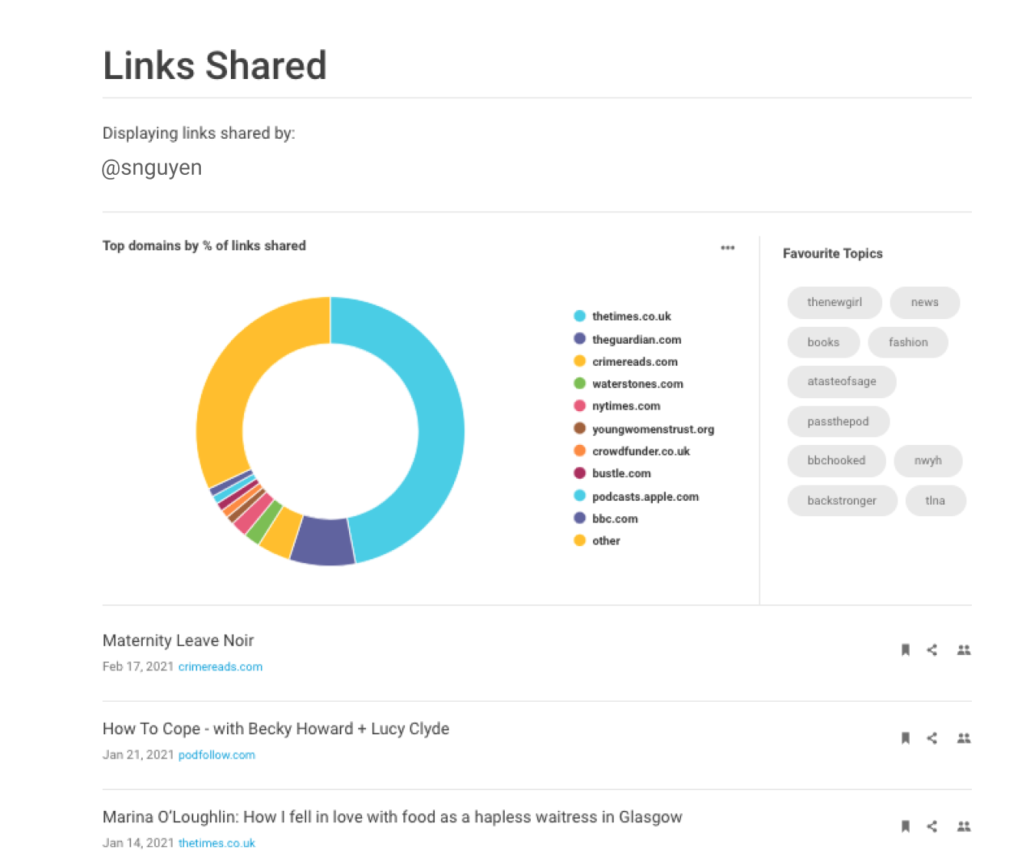The power of influencers, and as a result, finding social media influencers, in shaping brand narratives cannot be overstated. However, with the vast array of influencer tiers—from mega influencers to nano influencers—selecting the right influencer for your campaign requires a nuanced understanding of each category’s unique attributes and potential impact.
Using influencer marketing tools offers a multitude of benefits for brands looking to optimise their influencer collaborations. These tools streamline the process of identifying and connecting with the right influencers, ensuring that each partnership aligns with the brand’s values and campaign objectives.
Additionally, tools for finding social media influencers help manage and scale campaigns efficiently, saving time and resources by automating tasks such as contract management, content scheduling, and performance tracking. These tools not only simplify logistical aspects but also enhance the strategic deployment of influencer partnerships, making it easier to align influencers with specific campaign goals based on their reach and audience engagement metrics.
The Different Types of Influencers
Understanding the spectrum of influencer types is crucial for leveraging these tools effectively.
Here’s a comprehensive breakdown of the influencer hierarchy—from mega influencers to nano influencers.
Mega Influencers (1M+ followers)
- Characteristics: Mega influencers are often celebrities or high-profile personalities who command a vast and diverse following across the globe. While their reach is extensive, their engagement rates might not always match up due to the broad nature of their audience.
- Pros: Perfect for large-scale campaigns aiming for maximum exposure. Their celebrity status can significantly boost brand visibility and credibility.
- Cons: Engaging a mega influencer comes with a high price tag, and their broad audience might not be the best fit for niche marketing.
Macro Influencers (500K-1M followers)
- Characteristics: These influencers are typically rising stars in specific domains or minor celebrities. They offer substantial reach while maintaining better engagement rates than mega influencers.
- Pros: More affordable than mega influencers, macro influencers are great for national campaigns that require large audiences but not necessarily a global reach.
- Cons: Costs can still be relatively high, and the lack of a highly specialised audience can sometimes lead to lower conversion rates.
Mid-Tier Influencers (50K-500K followers)
- Characteristics: Known for their expertise in particular niches, mid-tier influencers engage a dedicated following through specialised content, often being viewed as thought leaders or trendsetters in their fields.
- Pros: These influencers strike a balance between reach and deep engagement, making them ideal for brands looking to communicate credibility and in-depth knowledge.
- Cons: More focused audience means less versatility across diverse markets. Their pricing can also vary significantly.
Micro-Influencers (10K-50K followers)
- Characteristics: With their highly engaged and loyal audiences, micro-influencers excel in creating meaningful and personalised content that resonates strongly with their followers.
- Pros: They often boast higher engagement rates, leading to better conversions. Micro-influencers are cost-effective, making them suitable for brands with smaller budgets or those looking to maximise their ROI.
- Cons: Their reach is limited, which might necessitate partnering with multiple micro-influencers to achieve broader visibility.
Nano Influencers (1K-10K followers)
- Characteristics: Nano influencers typically have a small but highly dedicated follower base. They are often seen as trustworthy peers within their communities, making their endorsements feel genuine and personal.
- Pros: The most affordable option, nano influencers are ideal for targeting hyper-local or extremely niche markets with unparalleled authenticity.
- Cons: Their reach is minimal, which can be a significant drawback for brands looking to scale up their visibility quickly.
Tools for Finding Social Media Influencers and Choosing the Right Influencer for Your Brand
For social media managers, the key to effective influencer collaboration lies in matching the influencer’s audience and strengths with your campaign’s goals. If broad visibility is your aim, mega or macro influencers might be the way to go. However, if engagement and conversion within specific niches are what you seek, then mid-tier, micro, or even nano influencers could be more beneficial.
Each type of influencer brings unique benefits and challenges to the table. Let’s explore some of the top tools for finding social media influencers that can help you identify, engage, and manage influencer relationships more effectively.
Please note: costs included below are correct as of 12 May 2024 using information publicly available online. They are subject to change and final pricing can depend on your detailed requirements and the number of users within your organisation that require access.
Influencer Marketing Hub
Influencer Marketing Hub offers an extensive suite of tools and resources tailored to influencer marketing. This platform provides insights on various aspects, including influencer discovery, campaign management, and performance analytics.
Social media managers can use this hub to access guides, templates, and the latest industry trends, making it a comprehensive resource for planning and executing influencer campaigns.
- Website: https://influencermarketinghub.com/
- Cost: Free access to basic resources and paid subscriptions for advanced tools and data.
- Best for: Brands and agencies looking for a one-stop shop to learn, plan, and execute influencer marketing strategies.
TikTok Creator Marketplace
This is TikTok’s official platform for brands to connect with creators directly.

It offers robust tools for discovering relevant TikTok influencers, viewing detailed analytics about their audience, and measuring campaign performance. Social media managers can utilise this platform to find influencers who align with their brand’s values and campaign goals, negotiate deals, and track the impact of their promotional efforts.
- Website: https://creatormarketplace.tiktok.com/
- Cost: Free to browse and connect
- Best for: Brands aiming to engage with a young, dynamic audience through creative and viral TikTok content.
YouTube Brand Connect
Formerly known as FameBit, YouTube Brand Connect integrates with YouTube to facilitate connections between brands and YouTube’s extensive network of content creators.
It provides tools for campaign management and performance tracking, making it easier for brands to collaborate with YouTubers to create authentic sponsored content.
- Website: https://www.youtube.com/ads/brandconnect/
- Cost: Costs are negotiated with creators; platform fees apply.
- Best for: Businesses looking to leverage long-form video content and reach diverse demographics on one of the world’s largest video platforms.
BuzzSumo
BuzzSumo is a powerful tool for content discovery, influencer identification, and competitive analysis. It allows users to search for the most shared content on social media for any topic and identify the influencers who are sharing that content.

This can help social media managers find relevant influencers whose audience engages with similar content.
- Website: https://buzzsumo.com/
- Cost: Free trial available; subscription plans start from $99/month.
- Best for: Content marketers and social media managers who want to base their influencer partnerships on data-driven insights about content performance and engagement.
Glewee
Glewee is a streamlined platform designed for brands to connect and collaborate with a curated network of influencers easily. With an all-in-one dashboard, brands can launch, manage, and track their influencer campaigns with efficiency. The platform emphasises ease of use and provides clear metrics on campaign performance.
- Website: https://glewee.com/
- Cost: Monthly subscription with varying tiers based on the scale of influencer engagement.
- Best for: Brands of all sizes looking for an easy-to-use platform to manage multiple influencer campaigns.
HypeAuditor
HypeAuditor focuses on Instagram, YouTube, TikTok, and Twitch, providing detailed analytics about influencers’ audiences, including authenticity checks to spot fake followers and engagement rates.
This tool is crucial for ensuring that social media managers are investing in influencers with genuine impact.
- Website: https://hypeauditor.com/
- Cost: Subscription starts at $299 per month after a free demo.
- Best for: Brands that need in-depth analysis and verification of influencer metrics to ensure authenticity and ROI.
Klear
Klear is an advanced influencer marketing platform offering comprehensive tools for finding influencers across multiple social networks, managing campaigns, and analysing results.

Its strengths lie in its extensive database and detailed influencer profiles that include demographic and psychographic data.
- Website: https://klear.com/creators/
- Cost: Pricing is available on request; typically structured as an annual subscription.
- Best for: Large organisations and agencies that require a robust tool for ongoing influencer campaigns and deep analytics.
Traackr
Traackr allows brands to manage all aspects of influencer relationships from a single platform.
It supports global influencer strategies and provides tools for discovering influencers, managing interactions, measuring campaign impact, and optimising influencer relationships over time.
- Website: https://www.traackr.com/
- Cost: Pricing is custom-based on the scale and needs of the organisation.
- Best for: Large brands and multinational companies focused on building long-term, scalable influencer relationships across multiple markets.
Have we missed any useful tools to support influencer discovery? Simply email editor@thelighthouse.social with your recommendations. If we review the tool and find it valuable to include, we’ll send you a £10 Amazon voucher as a token of appreciation.


